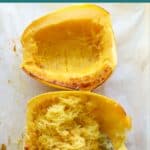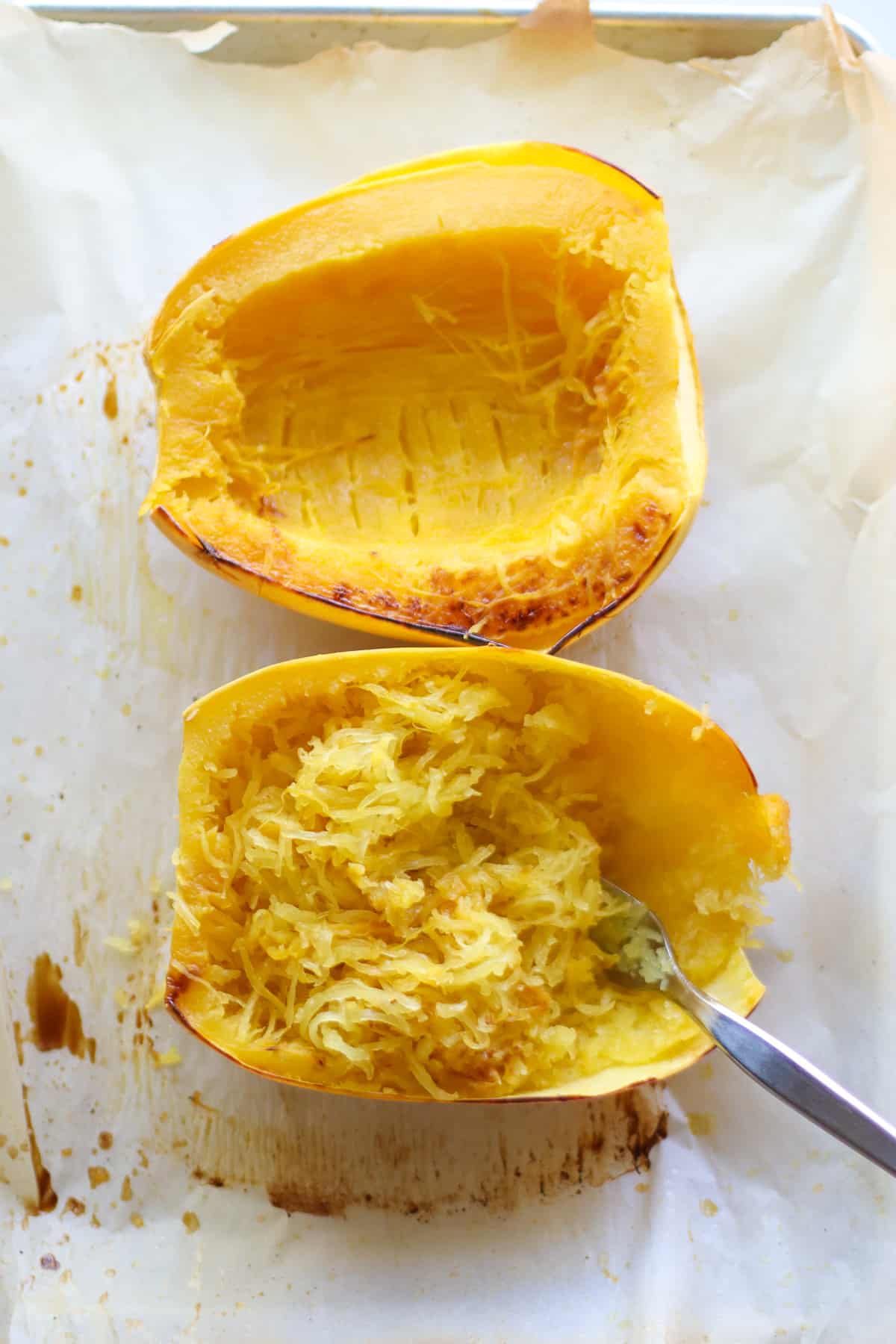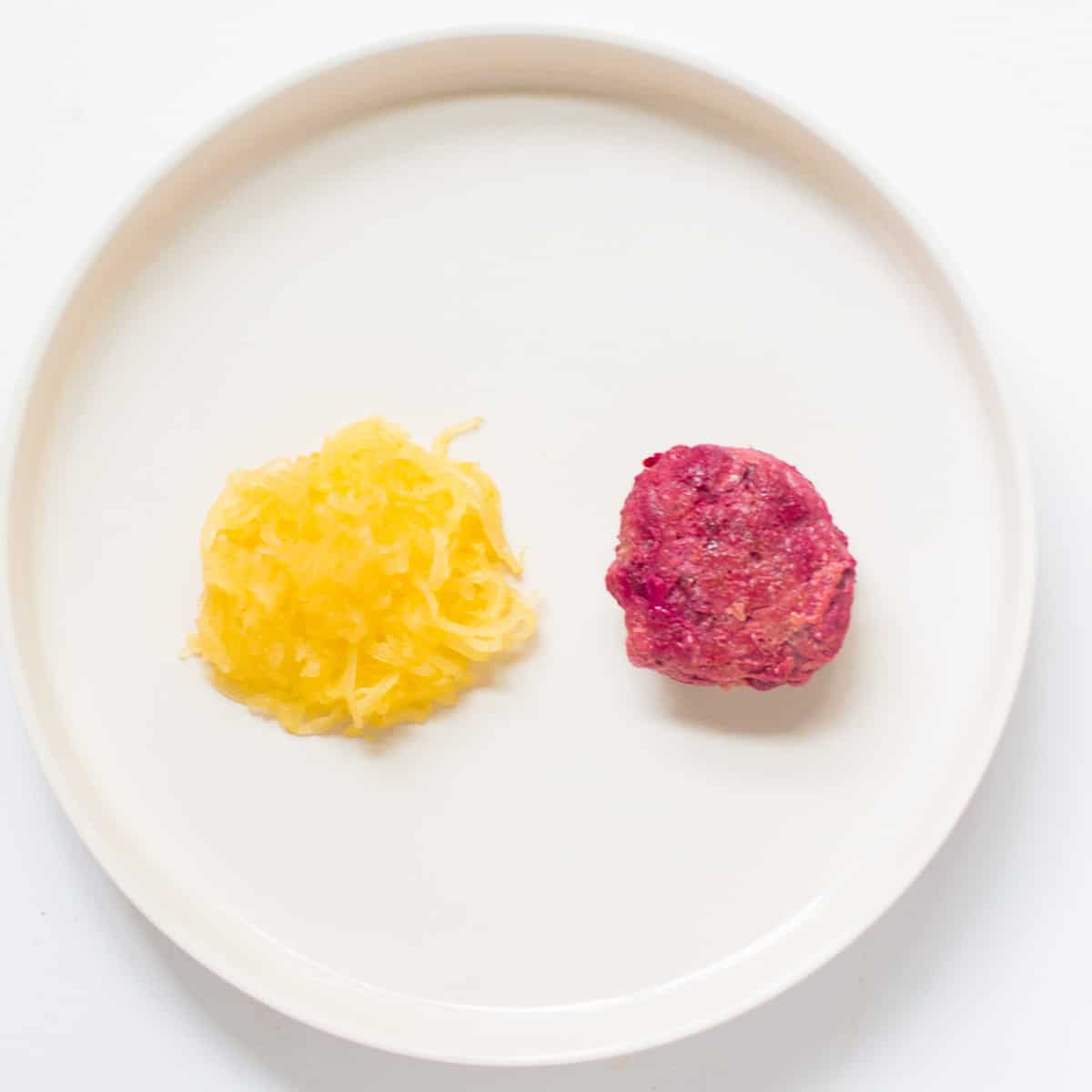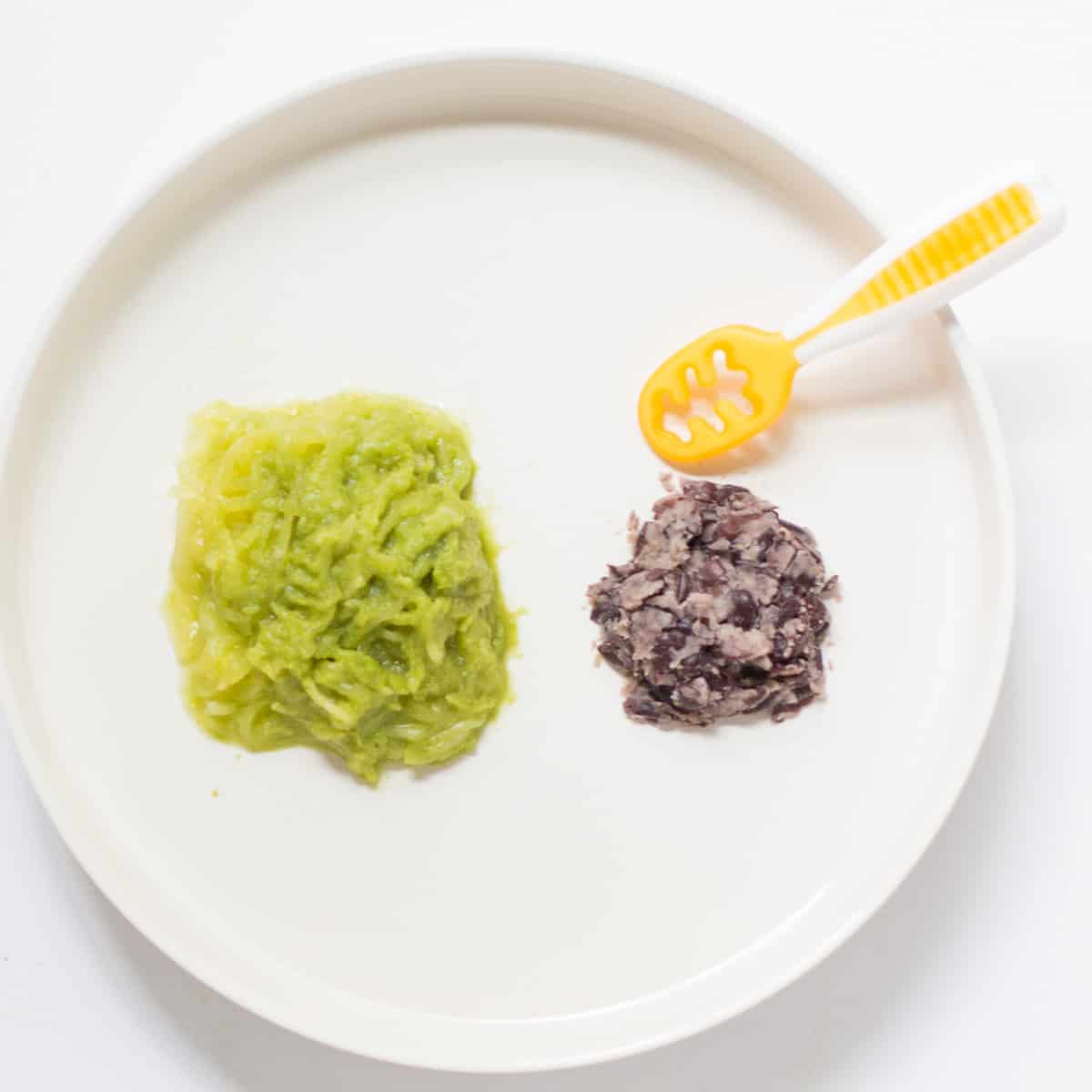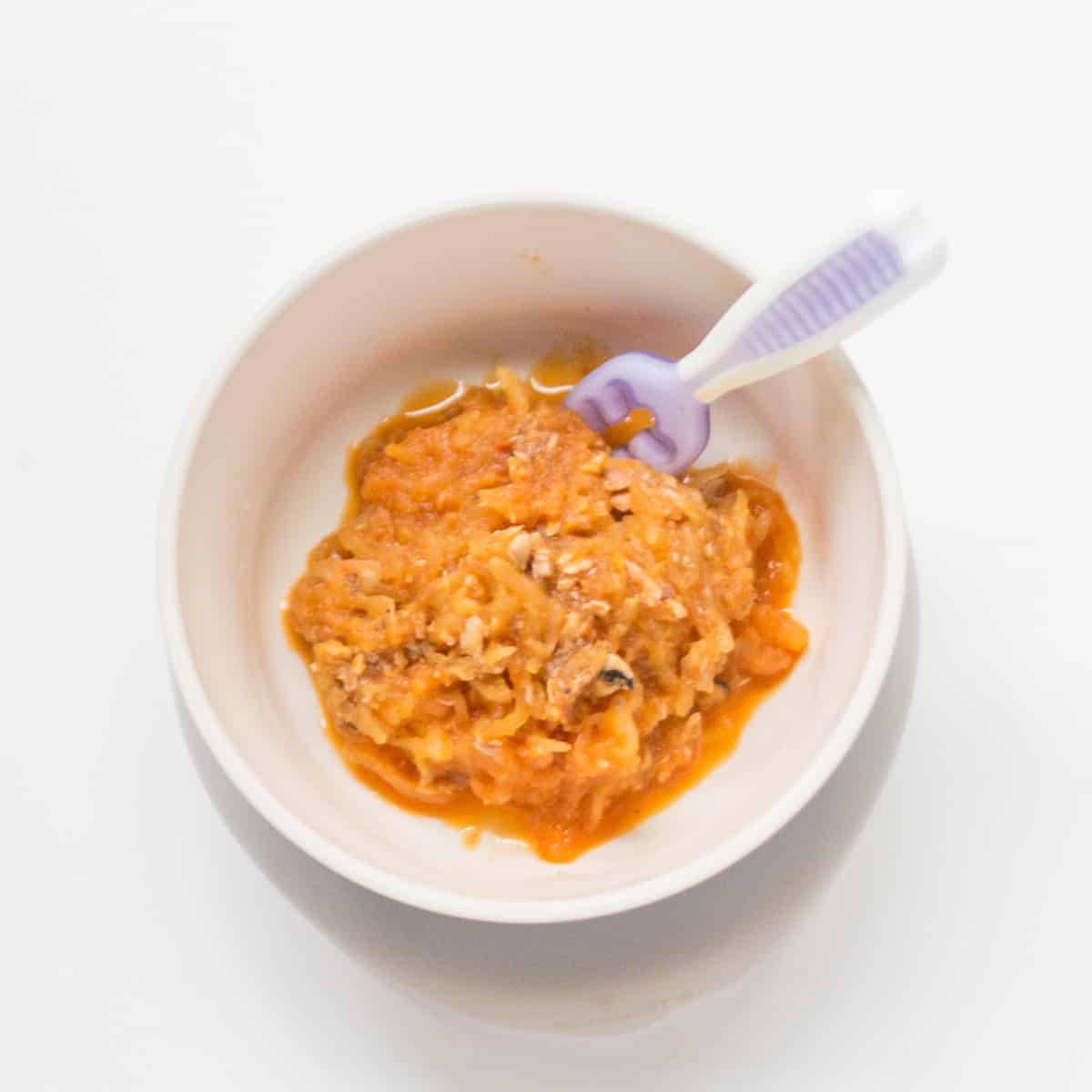When can babies eat spaghetti squash?
This amazing winter squash can be offered to babies as soon as they’re ready to start solids, usually around 6 months. It’s important to remember that your baby is unique and that rather than going by the calendar, you need to make sure your baby is DEVELOPMENTALLY ready to start solids. If you’re unsure, be sure to grab my FREE handout!
Health Benefits
All winter squash, including butternut squash and pumpkin, are particularly great sources of vitamin C, vitamin B6, and fiber. They’re also loaded with a powerful antioxidant called carotenoids, like beta carotene, which gets converted into vitamin A. Carotenoids are fat-soluble compounds, so they are best absorbed with fat. Best weight gain foods for babies and toddlers
Selecting the best spaghetti squash
While the common ones found in most grocery stores are large, yellow, and oval shaped, there are many varieties of spaghetti squash with different shapes, sizes, and colors. It’s typically harvested during the fall season, but it’s available year-round. Choose a squash that is firm without any soft spots or blemishes. Make sure that the stem is attached as it helps keep bacteria out and moisture in! It should also feel heavy for its size.
How to cook spaghetti squash
How to serve to babies
Pictured: cooked spaghetti squash with beet meatball Its mildly sweet flavor and stringy texture make spaghetti squash such a fun food for your baby! Just like cauliflower, its neutral flavor makes spaghetti squash the perfect companion for all kinds of sauces and dips! And because of how the flesh shreds into long strands, spaghetti squash “noodles” are commonly used in place of traditional pasta. All this to say, toss your cooked spaghetti squash with anything and everything! Here are some suggestions:
YogurtSugar-free pizza sauceLow-sodium teriyaki sauceBeet hummusZucchini pestoBroccoli pestoSweet potato sauceButternut squash pasta sauce
6-9 months
Pictured: spaghetti squash with zucchini pesto and mashed black beans. You can puree cooked squash in a blender until smooth or chunky or chop the cooked strands into small pieces. Toss with any sauce of choice and preload onto a spoon (this spoon is a MUST!) or allow your baby to dive right in with their hands. The benefits of messy eating for babies
9+ months
You can start offering longer strands. Pictured: Spaghetti squash with iron-rich tomato sauce and sardines Also I highly encourage you to give this spaghetti squash lasagna a try! It’s the perfect easy weeknight dinner for the whole family.
Storage Suggestions
For Uncooked
Whole squash can be stored in a cool, dark place for up to 3 months. Once cut, wrap the squash in plastic wrap or store in an airtight container for up to a week in the fridge.
For Cooked
Store in an airtight container for 3-5 days in the fridge. You can also freeze for up to 6 months.
